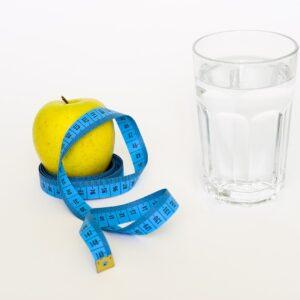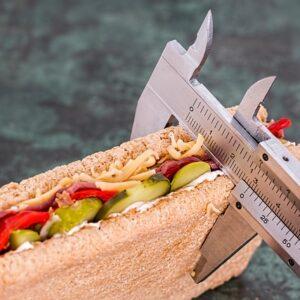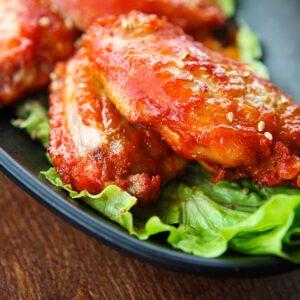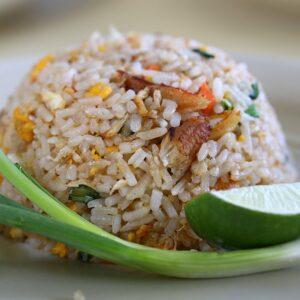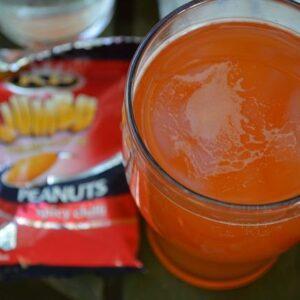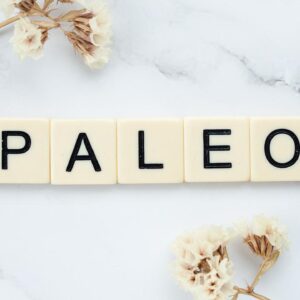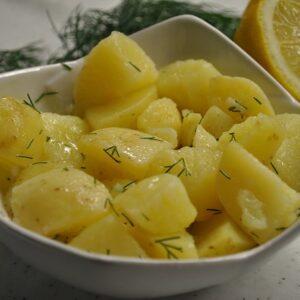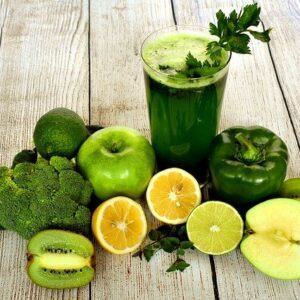How Can I Follow the DASH Diet to Prevent Hypertension?
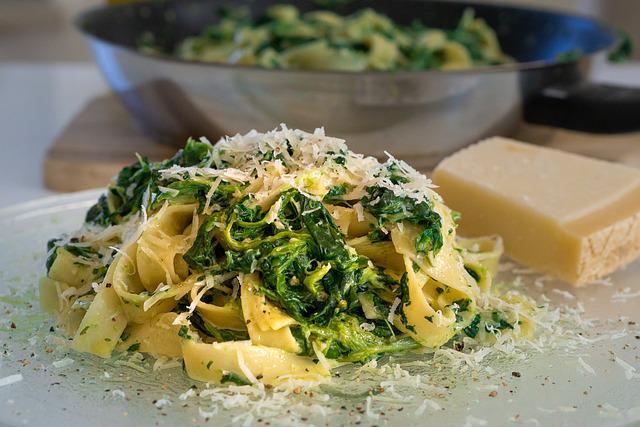
The DASH (Dietary Approaches to Stop Hypertension) diet is a well-known, low-fat and high-fiber diet that was developed to address the issue of high blood pressure. It is mostly preventable with a healthy diet.
As well as being recognized for its effectiveness for hypertension, it is one of the very few nutrition plans that can be followed on a wide range of diets including low carb diets such as Ketogenic diets and Atkins diets. The reason that it works so well is because the foods are high in fiber and low in fat.
The DASH diet contains 4 servings per day:
- 1/2 cup or less of vegetables (green leafy vegetables are recommended)
- 1/2 cup or less of fruits (with the exception of citrus fruits), including watermelon, berries, apples etc., but not cucumbers or melons
- 1/2 cup or less from whole grains such as whole grain breads; whole grain cereals; brown rice; quinoa; millet etc.; but not oats, corn flakes etc.
- 1/3 cup or less from added sugars such as sugar free crackers; sugar free gum drops; sugar free candies; maple syrup; white sugar substitutes like Swerve® brand powdered sugar — but not honey, molasses, sweeteners like white corn syrup.
If you follow this program faithfully over time you will have seen dramatic reductions in your blood pressure levels.
What Are the Benefits of The DASH Diet?
As you already know, The DASH diet for hypertension is a weight loss and blood pressure-lowering diet that is widely used by people who have high blood pressure.
The Dietary Approaches to Stop Hypertension Diet is a healthy eating plan focused on whole grains, fruits, vegetables and low-fat dairy products. It is also recommended for people with diabetes and for those who are trying to lose weight.
Who Should Follow the DASH Diet?
The DASH diet was developed by researchers and it was believed that it would help reduce the risk of high blood pressure. Hypertension also known as a leading cause of cardiovascular disease and stroke. In addition, people with diabetes were thought to benefit from following a low-salt diet due to their increased risk of developing heart attacks and strokes.

While there is still some debate over whether the DASH diet is effective in preventing hypertension, evidence has shown it can be as effective as other dietary approaches such as a low-fat/low-carbohydrate diet or even quitting smoking.
The diet requires eating three meals each day with snacks between meals. The recommended amount of sodium intake is 2 grams per day for women and 4 grams per day for men. The recommended number of sodium foods are processed meats (ham, bacon, salami).
Many fried foods (fried chicken drumsticks, fried fish), canned soups and other foods higher in sodium such as canned soups and tomato sauce. Breaded meats, meats prepared by deep frying or baking, sauces or dressings containing added salt. Sweetened-with-added sugar drinks such as soda pop or flavored water.
What Foods Are Included in The DASH Diet?
This list includes foods that are available in all grocery stores and that are low in sodium. They also include foods that are rich in Potassium, Magnesium, Calcium, Vitamin D, riboflavin and niacin (Vitamin B).
The DASH diet has been recommended as a way to prevent hypertension since the first publication of the Dietary Approaches to Stop Hypertension Diet by Dr. Michael W. Eades and colleagues in 1997. At the time it was considered one of the most effective dietary approaches for preventing hypertension.
It is also considered a heart-healthy diet because it emphasizes eating fruits, vegetables, whole grains and fish as well as limiting saturated fat intake.
What Foods Should Be Avoided on The DASH diet?
The DASH diet is a food list which consists of over 200 fruits, vegetables, and/or beans. It also includes dairy products, poultry and fish.
In addition, DASH is often referred to as the “blood pressure diet” because it attempts to lower blood pressure through lowering sodium intake, increasing physical activity and reducing dietary saturated fats.
The idea behind this diet is that if you reduce sodium consumption and increase physical activity, then you should also be able to lower your blood pressure or at least keep it in check. This makes sense because if you have high blood pressure, then you are at risk for cardiovascular disease and stroke. Also, high blood pressure can be linked to some forms of cancer, diabetes and obesity (especially abdominal obesity).
How Does the DASH Diet Work to Prevent or Treat Hypertension?
This diet is based on the idea that your body reacts positively when it is exposed to fewer calories than you burn. The more sugar you use to fuel your body when you eat, the more your body will release sugar into the bloodstream as a way of warning you about the blood sugar levels you are about to consume.
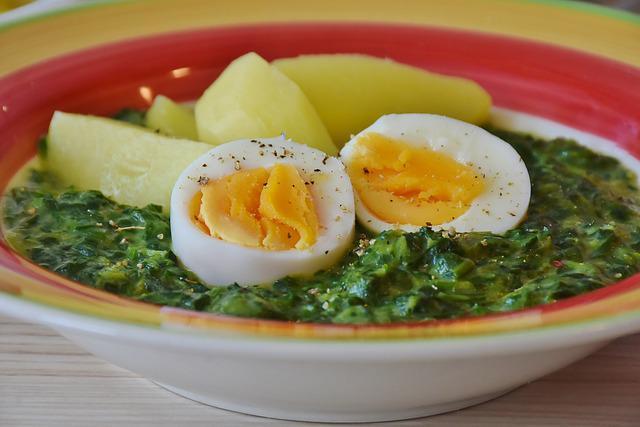
So, when you are trying to control your blood pressure, it is important that you focus on eating foods that won’t release blood sugar into your body as soon as you eat them i.e., complex carbs like fruit and veggies rather than doing your best to limit yourself from eating simple carbs such as cereal or potatoes. You may find the food list below that will help in lower your blood pressure:
- Fruits
- Vegetables
- Grains
- Legumes/Pulses
- Milks/Eggs/Butter/Cheese
- Soy Products (or in this case dairy)
Other good sources of calcium include dark leafy greens such as kale or Swiss chard; dark green leafy vegetables such as spinach; Tofu is also great because it contains calcium, edamame, and almonds.
Are There Any Side Effects Associated with The DASH Diet?
According to the NIH (National Institutes of Health). They realized that the standard American diet was not sufficient in terms of providing enough nutrients. The name of their diet reflects this, as it is designed to be higher in dietary sodium intake.
This list includes foods like lean meats which is low in fat and nuts with a few exceptions, fish without mercury, whole grains i.e., spelt or brown rice, legumes that is beans or chickpeas and low-fat dairy products.
The DASH diet is composed of three main goals: cut intake of saturated fat, reduce salt intake and increase fruit/vegetable intake. It is also recommended to drink more water throughout the day by drinking 1 liter or more every day – this can be achieved through drinking bottled water or filtered tap water.
Why DASH Diet and Not Other Diets?
It is not a diet. It is actually how they used this diet to control high blood pressure. However, there are similarities between the Mediterranean Diet and the DASH diet that can help you understand how it works.
In many circles, diets are just a means to lose weight. The real goal is to change the way you think about food and eating so that you can reduce your risk of developing diseases.
The DASH diet is a good choice for most people who have high blood pressure – which accounts for up to 98 percent of cases of cardiovascular disease – because it emphasizes fruits, whole grains, vegetables and low-fat dairy products (to cut fat) plus limits calories.
The DASH diet does not have a limit on the amount of fat people can consume or on cholesterol levels. It doesn’t recommend taking folic acid supplements or calcium supplements because most people don’t need these preventive measures.
Folic acid helps prevent birth defects called spina bifida and anencephaly. Calcium helps build strong bones and Vitamin D helps prevent osteoporosis – both conditions that contribute to high blood pressure.
Conclusion
The daily diet of the DASH diet is made up of foods high in water and low in sodium. It is for people with high blood pressure and for those who are not obese. The DASH diet does not need to be tailored to your specific needs. However, it can help you reduce your risk of developing hypertension.
